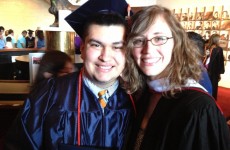Founded in 1963, The Post Oak School now enrolls nearly 450 students from 14 months through high school on two campuses. The school originally served children between the ages of 3 and 6 in a one-room schoolhouse located in the Briar Grove section of Houston. According to the school, Post Oak is the oldest Montessori school in the Southwest United States.
The Post Oak School
4600 Bissonnet Street, Bellaire, TX 77007 (Main) Mr. John Long, Head of School
1102 Autrey Street, Houston, TX 77006 (High School) Ms. Vivian Blum, Admission Director
713-661-6688
www.PostOakSchool.org
Religious Affiliation
Post Oak is a non-sectarian school. The school is culturally and ethnically diverse and accepts qualified students regardless of race, color, religion, or national origin.
Location and Facilities
The main campus of The Post Oak School is located in the city of Bellaire, a small city within the metropolitan area of Houston, Texas. The campus occupies a 3.5-acre lot located at the intersection of Bissonnet Street and Avenue B and is easily accessible from the West Loop, US-59, and the Westpark Tollway. Built in 1986, the 55,000 square foot building includes 19 classrooms, a library, a music studio, an art studio, a gym, an outdoor playground, a commons area, a recreation field, a basketball court, and gardens.
The Post Oak High School campus is located in the Houston Museum District just off US-59, giving students immediate access to the resources of the nearby museums and cultural institutions. The school building, which serves as the hub of this extended campus, features an open floor plan and features a design lab, a science lab, a presentation area, small group work areas, and a reception area.
Admissions
Lower school: The Post Oak School admission process generally includes 1) a campus tour 2) a completed admission application 3) transcripts or report cards from previous schools 4) teacher recommendations and 5) an interview. An electronic version of the application is available to view online. Siblings of current Post Oak students are given priority in admission, as are applicants whose parents have attended a series of four informational classes. The school prefers to admit children at age 3 or younger; however, older children are also eligible to enroll. Many students come from other Montessori schools, but not all.
High School: The Post Oak High School admission process includes 1) a general application 2) transcripts from the current school 3) teacher recommendations 4) a community member recommendation 5) ISEE test results 6) a student essay and work sample and 7) a school-day visit and interview. Applications are available online for high school applicants. Prior Montessori experience is not required for admission to the high school.
Academic Tracks and Curriculum
The Post Oak School utilizes the Montessori educational method, which was developed by an Italian physician, Maria Montessori, and serves children from birth to the age of eighteen. The Montessori Method emphasizes independence and freedom within limits and takes into account the variation of behavioral tendencies of children of different ages. It involves mixed age classrooms, student choice of activity, and uninterrupted periods of work. The school emphasizes active, hands-on learning, meaningful work, self-direction, the development of personal interests, and the opportunity to cultivate real-world social skills through peer teaching and collaborative learning.
The high school is an International Baccalaureate candidate school where students study English Language Arts, foreign language, history and the humanities, science, math, fine arts, and physical education. Twice each year, students participate in single, intensive multi-week classes that are collaboratively selected and designed by students and faculty, such as psychology or entrepreneurship and design. Students also complete a community service requirement and a capstone research project.
High school students use the resources of the Houston Museum District, Texas Medical Center, and local colleges and universities to open opportunities for long-term internships tailored to their interests and to extend their classroom learning. Students have visual arts classes at the Glassell Junior School, theater classes at Main Street Theater, and physical fitness classes at the Gibbs Recreation Center at Rice University. Students conduct research in the field around the Museum District and do library-based research at the Fondren Library at Rice University and at the Doherty Library at the University of St. Thomas.
Special Needs
The Post Oak School believes that “in a fundamental way, all children have special needs.” The Post Oak School aims to respond to each child as an individual, to help each child identify personal interests and to develop skills. For example, one child may be ready to do far more than what a narrowly-defined curriculum might prescribe, another child may need to repeat an activity before understanding, and some children have diagnosed learning differences. In many cases Post Oak can meet those needs in the classroom; in other cases, we do not have the resources or the expertise to do so. In either case, the school will make that determination with parents and in consultation with outside experts.
Foreign Languages
Children learn Spanish language and culture from the earliest ages at Post Oak. In the elementary years, Spanish instruction includes formal lessons. Younger children concentrate on basic vocabulary and conversation, while older students learn Spanish grammar, verb conjugations, and written Spanish. High school students choose to study Spanish or Mandarin Chinese.
Arts
Students at Post Oak work in various media of the visual arts. For younger children, artistic expression is always available in their classroom as a choice of activity. Once children enter the elementary years, formal classes introduce a variety of artistic media, including drawing, painting, and sculpting. Elementary and middle school classes design sets for classroom theatrical productions and produce models and illustrations to accompany academic work. High school students walk to the nearby Glassell Junior School for their visual art classes.
Students engage in music study and performance from their early years at Post Oak. Elementary, middle, and high school students continue performance as well as music appreciation and music history.
Elementary, middle, and high school students study theater as appropriate to their ages with a focus on performance and performance support work. High school students work with the Main Street Theater for their visual arts classes and performances.
Technology
The Post Oak School offers students technology that is matched to their stage of development. Pre-elementary students utilize common hand tools and other manipulative learning materials, but no electronic technology. Young elementary students use computers in the school library for research, and by the upper elementary level (grades 4-6), there are desktop computers in the classroom. Middle school students use laptop computers in class, and each student is issued an e-reader. The high school is an iPad environment, and students use the device as an e-reader, for various apps that have academic applications, and to produce work in writing and other media. High school students explicitly learn how to manage e-mail, files, calendars, written work, and the other elements of their electronic, online lives.
Extracurricular Activities
The Post Oak School offers optional after-school enrichment classes, including art, choir, dance, Chinese, Spanish, and chess classes. A variety of clubs are also offered for student participation, including cheer squad, Montessori Model UN, stamp collecting, a running club, and intramural sports.
Athletics
Post Oak School offers interscholastic competition at the middle school level (grades 7-8) in the following sports: cross-country, volleyball, soccer, and basketball. Upper elementary students (grades 4-6) can participate in intramural sports afterschool. In the spring, a post-season flag football team is offered for students in both elementary and middle school.
At the high school level, students participate in outside clubs because the athletics department is currently in development. Physical education classes utilize facilities at Rice University and enable students to explore a range of fitness options including ultimate Frisbee, yoga, basketball, track, and volleyball.
Parent Involvement
The Post Oak School invites parents into a partnership in service to their child. In terms of the day-to-day life of the school, there are many opportunities for involvement: from service on the board of trustees to cooking with small groups of children; from sharing your professional expertise with classes to helping chaperone field trips; from gardening with children to working with parent committees to organize community events.
Post Oak Montessori School Fast Facts
| Overview | |
| School Type | Montessori, Coeducational |
| Religious Affiliation
Uniforms |
Nonsectarian
No |
| Date Founded | 1963 |
| Endowment | $1.5 M |
| Grades Served | Pre-K – 12 |
| Enrollment | 450 |
| Upper School (Grades 9-10) | 20 |
| High School (Grades 9-10) | 30 |
| Middle School (Grades 7-8) | 31 |
| Upper elementary (Grades 4-5-6) | 83 |
| Lower elementary (Grades 1-2-3) | 98 |
| Toddler-PK-K | 208 |
| Student to Teacher Ratio | 8:1 |
| Faculty with Advanced Degrees (#/%) | 60% |
| Minorities in Student Body | 42% |
| Curriculum | |
| Academic Tracks Offered | IB |
| International Baccalaureate Courses | N/A |
| Languages Offered | Chinese, Spanish |
| Calendar (Semester / Trimester / Other) | N/A |
| Interscholastic Sports Programs | 4 |
| Graduating Seniors | |
| National Merit Semi-Finalists (#/%) | N/A |
| Average SAT Scores (Class of 2012) | N/A |
| Mathematics | N/A |
| Critical Reading | N/A |
| Writing | N/A |
| % Students Admitted to 4 Year University | N/A |
| Admissions | |
| Prime Entry Points | Pre-K, 1, 9 |
| Pre-K and Kindergarten | $13,500 – $22,200 |
| Grades 1-8 | $16,800 |
| Grades 9-12 | $22,000 |
| New Student Fee | $500 |
| Travel Fee | $125 – $3,500 |
| Students on Financial Aid | 13% |
Excerpted from General Academic’s publication, “Houston Private & Select Public Schools: Survey, Analysis, and Research, 3rd Edition.”
















Pingback: An Expats Guide to Houston’s International Schools